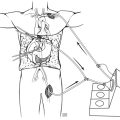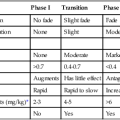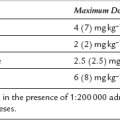Cancer drug resistance represents one of the most formidable challenges in oncology, affecting treatment outcomes across virtually all cancer types. Despite remarkable advances in targeted therapies, immunotherapies, and combination treatments, the ability of cancer cells to develop resistance mechanisms continues to limit therapeutic success and contribute to treatment failure. Understanding these complex resistance pathways has become a critical focus for researchers seeking to improve patient outcomes and develop more effective treatment strategies.
The Complexity of Drug Resistance in Cancer
Drug resistance in cancer manifests through multiple interconnected mechanisms that can emerge either before treatment begins (intrinsic resistance) or develop during the course of therapy (acquired resistance). These resistance mechanisms operate at various biological levels, from genetic mutations and epigenetic modifications to changes in protein expression and metabolic pathways. The heterogeneous nature of tumors further complicates this landscape, as different subpopulations of cells within the same tumor may exhibit varying degrees of sensitivity to treatment.
Parallels with Antimicrobial Drug Resistance
The challenge of drug resistance extends beyond oncology, with antimicrobial drug resistance representing a parallel concern in infectious disease treatment. Similar to cancer cells, pathogenic microorganisms develop resistance through genetic mutations, enzymatic modifications, and adaptive mechanisms. Understanding these broader resistance patterns across different biological systems provides valuable insights for developing comprehensive approaches to combat therapeutic resistance, as the fundamental principles of evolutionary pressure and adaptation apply to both cancer cells and infectious agents.
Cancer cells demonstrate remarkable adaptability when faced with therapeutic pressure. They can activate alternative signaling pathways, modify drug targets, enhance DNA repair mechanisms, or alter their metabolic processes to survive treatment. This adaptability is particularly challenging because it often involves multiple simultaneous changes rather than single, targetable alterations. The tumor microenvironment also plays a crucial role, with surrounding cells, blood vessels, and immune components all potentially contributing to treatment resistance.
Genetic and Epigenetic Foundations of Resistance
At the molecular level, drug resistance frequently stems from genetic alterations that affect drug targets, metabolism, or cellular survival pathways. Point mutations can alter the structure of target proteins, rendering drugs ineffective, while gene amplification can increase the production of resistance-conferring proteins. Copy number variations and chromosomal rearrangements add additional layers of complexity to the resistance landscape.
Epigenetic modifications represent another crucial dimension of drug resistance. Changes in DNA methylation patterns, histone modifications, and non-coding RNA expression can alter gene expression without changing the underlying DNA sequence. These epigenetic changes can be reversible, presenting both challenges and opportunities for therapeutic intervention. The dynamic nature of epigenetic regulation means that resistance patterns can evolve rapidly and may be influenced by environmental factors within the tumor.
Neoplasia and Resistance Evolution
The inherent characteristics of neoplasia contribute significantly to the development of drug resistance. Neoplastic transformation involves the accumulation of genetic and epigenetic changes that enhance cellular survival and proliferation capabilities. These same mechanisms that drive neoplastic progression often provide the foundation for resistance development. The genomic instability characteristic of many cancers accelerates the generation of resistant cell populations, while the clonal evolution process selects for cells with survival advantages under therapeutic pressure.
Metabolic Reprogramming and Resistance
Cancer cells frequently alter their metabolic processes to survive treatment-induced stress. This metabolic reprogramming can include changes in glucose utilization, lipid metabolism, amino acid processing, and cellular energy production. Some cancer cells shift from oxidative phosphorylation to glycolysis, while others may enhance their ability to utilize alternative nutrient sources. These metabolic adaptations can help cancer cells survive in hostile environments and resist the effects of targeted therapies.
The relationship between metabolism and drug resistance extends beyond simple energy production. Metabolic enzymes often play roles in drug activation or detoxification, and changes in metabolic pathways can directly impact drug efficacy. Additionally, metabolic stress can trigger cellular survival programs that enhance resistance to various forms of treatment. Understanding these metabolic adaptations is essential for developing strategies to overcome resistance.
Microenvironmental Influences on Drug Resistance
The tumor microenvironment creates a complex ecosystem that can either support or hinder therapeutic responses. Factors such as oxygen levels, pH, nutrient availability, and the presence of supporting cells all influence how cancer cells respond to treatment. Hypoxic conditions, common in many solid tumors, can promote resistance through multiple mechanisms including the activation of survival pathways and the selection of resistant cell populations.
Stromal cells, including fibroblasts, immune cells, and vascular components, can directly contribute to drug resistance by providing protective signals, creating physical barriers to drug delivery, or metabolizing therapeutic agents. The extracellular matrix can also influence drug penetration and cellular responses to treatment. These microenvironmental factors highlight the importance of considering the tumor as a complex organ system rather than simply a collection of malignant cells.
Research Approaches and Model Systems
Studying drug resistance mechanisms requires sophisticated model systems that can accurately recapitulate the complexity of human tumors. Traditional cell line studies, while valuable, often fail to capture the full spectrum of resistance mechanisms observed in patients. Advanced model systems that preserve tumor architecture, genetic diversity, and microenvironmental features are essential for understanding resistance development and testing potential solutions. To see what PDX models are capable of in resistance research, scientists are increasingly turning to these sophisticated platforms that maintain the complex biological features necessary for meaningful resistance studies.
Current research efforts focus on identifying resistance biomarkers, understanding resistance kinetics, and developing combination strategies to prevent or overcome resistance. High-throughput screening approaches, computational modeling, and systems biology methods are being employed to map resistance networks and identify vulnerabilities in resistant cancer cells.
Clinical Implications and Future Directions
The clinical impact of drug resistance extends far beyond laboratory observations, directly affecting patient outcomes, treatment selection, and healthcare costs. Resistance development often necessitates treatment modifications, additional therapies, or alternative approaches that may be less effective or more toxic. Understanding resistance mechanisms is therefore essential for optimizing treatment sequences, predicting treatment responses, and developing personalized therapy strategies.
Future approaches to addressing drug resistance will likely involve combination therapies designed to target multiple resistance pathways simultaneously. Adaptive treatment strategies that modify therapy based on resistance evolution are also being explored. Additionally, strategies to prevent resistance development, rather than simply treating it after it occurs, represent a promising area of investigation.
FAQ
What is the difference between intrinsic and acquired drug resistance? Intrinsic resistance exists before treatment begins and results from pre-existing characteristics of the tumor, while acquired resistance develops during treatment as cancer cells adapt to therapeutic pressure through various survival mechanisms.
How quickly can cancer cells develop drug resistance? The timeline for resistance development varies significantly depending on the cancer type, treatment, and individual patient factors. Some resistance mechanisms can emerge within weeks of treatment initiation, while others may take months or years to develop.
Can drug resistance be prevented? While resistance cannot always be prevented completely, strategies such as combination therapies, alternating treatment regimens, and targeting resistance pathways can help delay or minimize resistance development in many cases.
Are all cancer types equally prone to developing drug resistance? Different cancer types exhibit varying propensities for resistance development based on their genetic characteristics, growth patterns, and inherent biological features. Some cancers, such as pancreatic cancer, are notoriously resistant to many treatments.
How do researchers study drug resistance mechanisms? Researchers use various approaches including advanced tumor models, genomic analysis, proteomics studies, metabolomics, and computational modeling to understand how resistance develops and identify potential targets for intervention.




